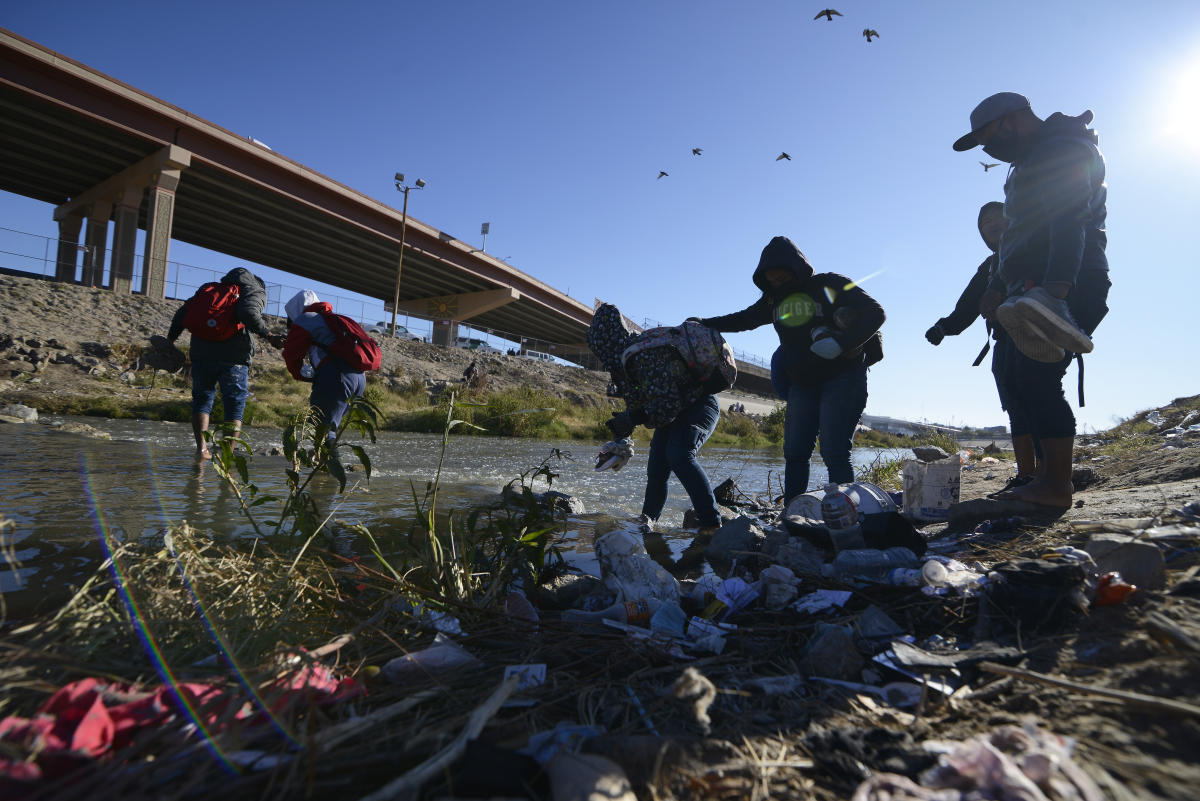
TIJUANA, Mexico (AP) — In 2014, groups of unaccompanied children escaping violence in Central America overwhelmed U.S. border authorities in South Texas. In 2016, thousands of Haitians fled a devastating earthquake and stopped in Tijuana, Mexico, after walking and taking buses through up to 11 countries to the U.S. border.
In 2018, about 6,000 mostly Guatemalan and Honduran migrants fleeing violence and poverty descended on Tijuana, many of them families with young children sleeping in frigid, rain-soaked parks and streets.
A Trump-era ban on asylum, granted a brief extension by Supreme Court Chief Justice John Roberts on Wednesday, was one of the U.S. policies affecting migrants’ decisions to leave their homes. The last eight years show how an extraordinary convergence of inequality, civil strife and natural disasters also have been prompting millions to leave Latin America, Europe and Africa. Since 2017, the United States has been the world’s top destination for asylum-seekers, according to the United Nations.
___
This is part of an occasional series on how the United States became the world’s top destination for asylum-seekers.
___
Migrants have been denied the right to seek asylum under U.S. and international law 2.5 million times since March 2020 on grounds of preventing the spread of COVID-19, an authority known as Title 42. It applies to all nationalities but has fallen disproportionately on people from countries that Mexico takes back, Guatemala, Honduras, El Salvador and, more recently Venezuela, as well as Mexico. Pent-up demand is expected to drive crossings higher when asylum restrictions end.
When the pandemic hit, nationalities rarely seen at the border grew month after month, from Cuba, Peru, Venezuela, Ecuador, Colombia. High costs, strained diplomatic relations and other considerations complicated U.S. efforts to expel people from countries that Mexico wouldn’t take.
Cubans are fleeing their homes in the largest numbers in six decades to escape economic and political turmoil. Most fly to Nicaragua as tourists and slowly make their way to the U.S. They were the second-largest nationality at the border after Mexicans in October.
Grissell Matos Prieguez and her husband surrendered to border agents near Eagle, Pass, Texas, Oct. 30, after a 16-day journey through six countries that included buses, motorcycles and taxis and exhausting night walks through bushes and foul-smelling rivers.
“Throughout all the journey you feel like you are going to die, you don’t trust anybody, nothing,” said Matos, a 34-year-old engineer. “You live in a constant fear, or to be detained and that anything would happen.”
To pay for the trip from Santiago de Cuba, they sold everything, down to computers and bicycles, and borrowed from relatives in Florida. Their parents and grandparents stayed behind.
A recent surge that has made El Paso, Texas, the busiest corridor for illegal crossings is made up largely of Nicaraguans, whose government has quashed dissent.
Haitians who stop in South America, sometimes for years, have been a major presence, most notably when nearly 16,000 camped in the small town of Del Rio, Texas, in September 2021. The Biden administration flew many home but slowed returns amid increasingly brazen attacks by gangs that have grown more powerful since the assassination of President Jovenel Moïse last year.
Migration is often driven by “pull factors” that draw people to a country, such as a relatively strong U.S. economy and an asylum system that takes years to decide a case, encouraging some to come even if they feel unlikely to win. But conditions at home, known as “push factors,” may be as responsible for unprecedented numbers over the last year.
Looking back, Tijuana attorney and migrant advocate Soraya Vazquez says the Haitian diaspora of 2016 was a turning point.
“We began to realize that there were massive movements all over, in some places from war, in others from political situations, violence, climate change,” said Vazquez, a San Diego native and former legislative aide in Mexico City. “Many things happened at once but, in the end, men and our governments are responsible.”
After hosting legal workshops for Haitians in Tijuana, Vazquez helped bring chef Jose Andres’ World Central Kitchen to the city’s migrant shelters for four years. Seeking financial stability, she became Tijuana director of Al Otro Lado, a nonprofit group that reported $4.1 million in revenue in 2020 and was recently named a beneficiary of MacKenzie Scott’s philanthropy.
“What provoked all of this? Inequality,” Vazquez said over tea in Tijuana’s trendy Cacho neighborhood.
For decades, Mexicans, largely adult men, went to the U.S. to fill jobs and send money home. But in 2015, the Pew Research Center found more Mexicans returned to Mexico from the U.S. than came since the Great Recession ended.
Mexicans still made up one of three encounters with U.S. border agents during the fiscal year that ended Sept. 30, higher than three years ago but well below the 85% reported in 2011 and the 95% at the turn of the century. And those fleeing are increasingly families trying to escape drug-fueled violence with young children.
Like clockwork, hundreds cross the border after midnight in Yuma, Arizona, walking through Mexican shrub to surrender to U.S. agents. Many fly to the nearby city of Mexicali after entering Mexico as tourists and take a taxi to the desert. The Border Patrol releases them to the Regional Center for Border Health, a clinic that charters six buses daily to Phoenix Sky Harbor International Airport.
The health clinic had shuttled families from more than 140 countries by August, not one from Mexico, said Amanda Aguirre, its executive director.
Daniel Paz, a Peruvian who surrendered to border agents in Yuma with his wife and 10-year-old in August, had the surprise misfortune of being expelled home without a chance at asylum, unusual even after the Peruvian government began accepting two U.S. charter flights a week.
Peruvians were stopped more than 9,000 times by U.S. authorities along the Mexican border in October, roughly nine times the same period a year earlier and up from only 12 times the year before.
Paz is watching developments around Title 42 and considering another attempt after the government of Peruvian President Pedro Castillo was toppled Dec. 7.
“We’ll see if I’m back in January or February,” he texted Sunday from Lima. “There is no lack of desire.”
Tijuana’s latest newcomers are Venezuelans, about 300 of whom recently temporarily occupied a city-owned recreational center.
About 7 million Venezuelans fled since 2014, including nearly 2 million to neighboring Colombia, but only recently started coming to the United States.
Many Venezuelans gather at Mexico’s asylum office that opened in Tijuana in 2019 and processed more than 3,000 applications in each of the last two years from dozens of countries, led by Haitians and Hondurans.
Jordy Castillo, 40, said he’d wanted to leave Venezuela for 15 years but didn’t act until friends and family started reaching the United States last year. His three brothers were first in his circle to seek asylum there, even though they knew no one.
“They found someone who took them in and got settled,” he said.
__
Associated Press writer Gisela Salomon in Miami contributed.




